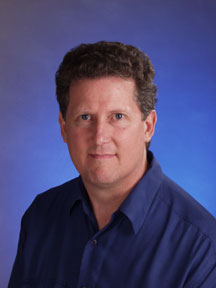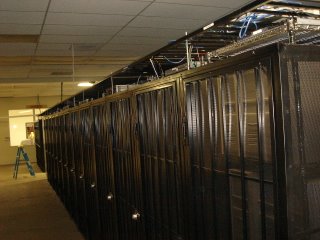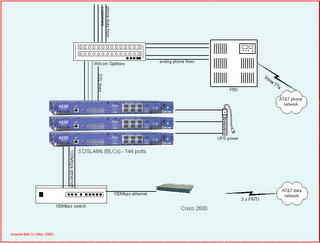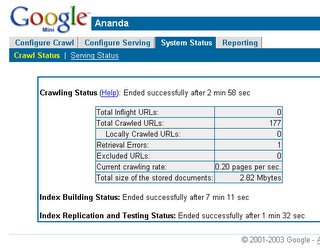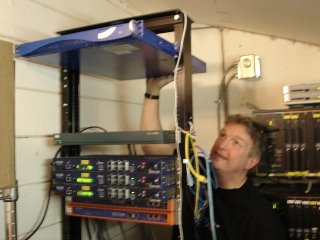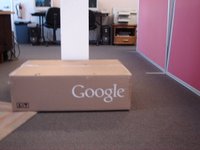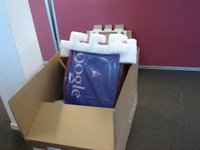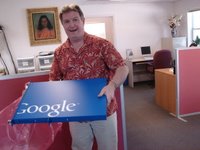DSL – Digital Subscriber Line
As you know a DSL modem is orders of magnitude faster than a dial-up modem. The fastest ADSL standard, known as ADSL2+, is capable of 24Mbit/s downstream speed. Compared with a 56K modem, this is more than 400 times faster. Don’t start drooling because we can’t offer that speed of internet access in the village, at least not yet. We are limited by Ananda Bell’s pipe to the internet which is currently a bonded pair of two T1 lines giving us an aggregate capacity of 3Mbit/s downstream and same upstream. This will soon be upgraded to a total of three T1 lines, which will provide an aggregate bandwidth of 4.5Mbit/s.
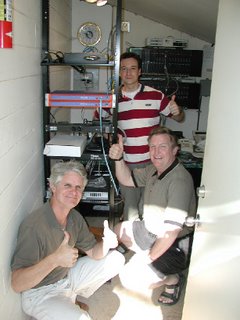
When we first installed DSL in the village, we were using the first generation DSL standard called ADSL Lite (or G.Lite), which provided 1.5Mbit/s downstream and 0.5Mbit/s upstream speeds. Note that, because all of our DSL connections in the village end up being funneled through a single T1 line (1.5Mbit/s upstream and 1.5Mbit/s downstream) we had to use some measures to prevent a single person taking up the entire bandwidth of the village. So, Ric and I implemented profiles of different speeds; bronze, silver, gold, platinum, etc. This created a tiered service offering at different monthly costs to appeal to many households, as well as prevented the bandwidth hogs. Later on we upgraded our DSLAMs to be capable of the more recent standard called ADSL2, which in theory could give each household 12Mbit/s downstream speed but again, we had to rate-limit each connection to provide fair-use of our much smaller pipe to the internet.
Apart from speed, another great feature of DSL is that it works on your existing phone line and even when you are on the phone. How does it do that?
Your telephone service (POTS – Plain Old Telephone Service) carries human voice in a frequency range of 0 to 3,400 Hertz (cycles per second). This results in a somewhat low quality sound as it does not include the full-range of human voice. You may have noticed that often times it is hard to distinguish between “s” and “f” sounds on the phone, that’s because the high frequencies that are needed to distinguish those sounds are filtered by your phone or by the phone switch. In comparison, most stereo speakers can cover 20 Hertz to 20,000 Hertz. You may have also noticed that when you make a Skype call from one computer to another, the sound quality is much better than a POTS call, because Skype software does not filter out human voice as aggressively as POTS.
Your phone wires are capable of transmitting much higher frequencies than even the audible range, several Mhz (megahertz) in fact. These higher frequencies do not interfere with the voice on your phone line and therefore provide a large playground for the DSL technology. ADSL2 uses up to 1.1Mhz, ADSL2+ uses 2.2Mhz and the VDSL2 standard uses as much as 12Mhz.

Fax machines also use the frequency range of POTS calls.
That’s why you can hear the tones generated by the fax machine, but you cannot make a phone call on the same line shared by a fax machine if your fax machine is sending or receiving at that time.
One could theoretically make a fax machine that uses higher frequencies and that can send and receive much faster, but then you need to have those two fax machines connected directly to each other, because if you go through the phone company’s switch, guess what, they will filter all the high frequencies again.
The good old dial-up modems worked fine between you and your friend’s house because they only sent their signal over the POTS frequencies.
You cannot do the same with a pair of DSL modems.
That’s why the peer for your DSL modem is located at the phone company, where the voice frequencies and DSL frequencies are split.
The voice frequencies go to the phone switch in the
PSTN, the DSL frequencies go to the
DSLAM.
To be continued ...
